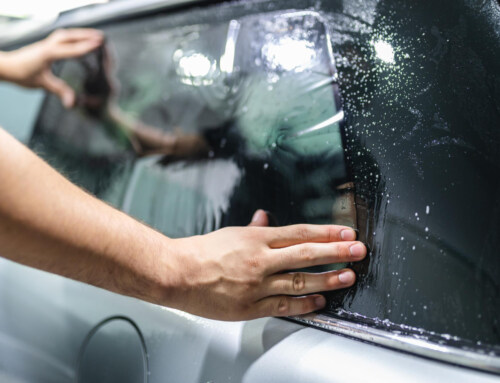A cracked windshield is similar to a broken phone screen. It’s unsightly, unusable, and can lead to a lot of dangerous situations. Windshield chips and divots are actually some of the most common car maintenance issues, caused by a variety of road debris, fauna, and human error.
It seems that everything in the world, from nuts and bolts to birds and rocks, appears to be out to crack your windshield. According to insurancejournal.com:
“Windshields are the number one insurance claim in the United States. Thirty percent of auto insurance claims are windshields. Edge cracks account for approximately 70-80% of these windshield replacement claims…”
Fortunately, over the last three decades, windshield technology and construction have advanced to the point where fewer injuries are reported as a result of such impacts and repairs to the damaged pieces are near flawless.
However, regardless of the safety and convenience that modern technology entails, understanding your options and the processes involved can provide a lot of helpful information especially when it is your first time in this situation. This knowledge can then be used to help you improve your safety and mitigate any further damage in the future.
Three Common Windshield Repair Methods
That said, windshield repair can be accomplished in three primary ways: windshield patches, resin, and replacement.
Windshield Patch
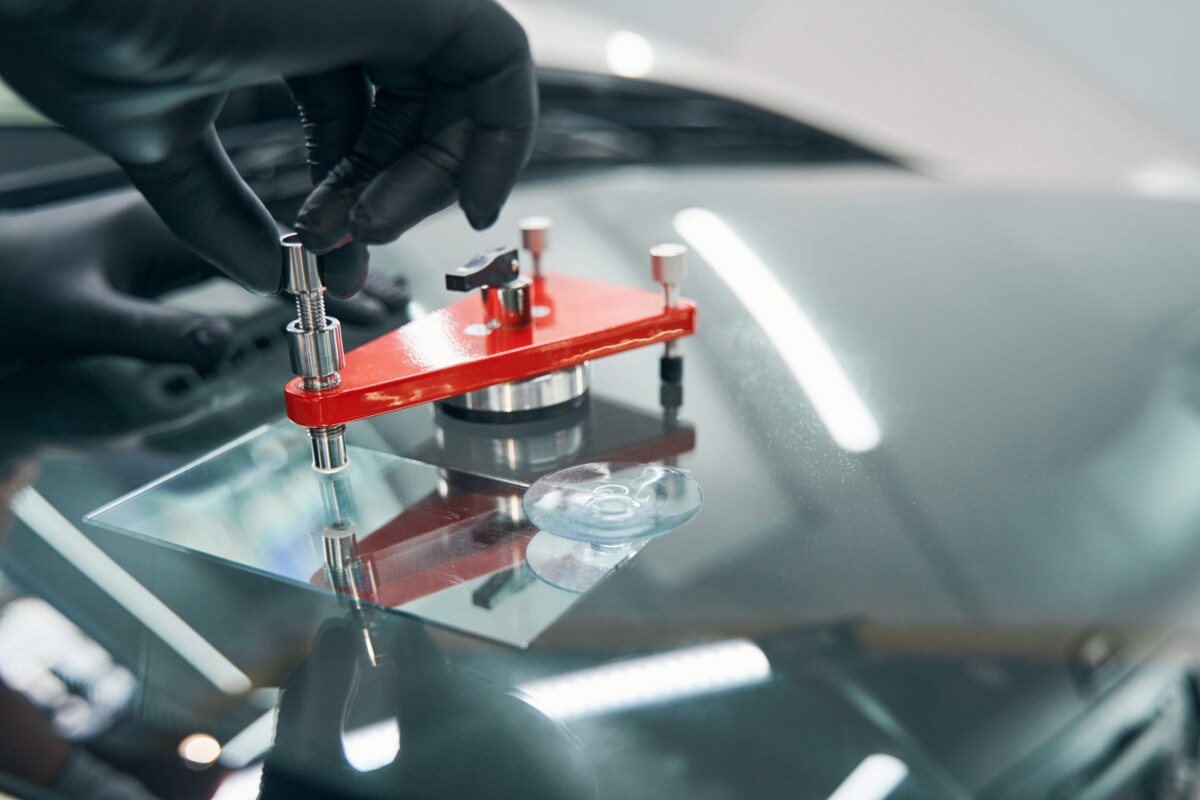
A windshield patch is usually sold as part of a do-it-yourself repair kit. Most repair shops rarely use this type of repair method because it is not the most effective. If your windshield has a chip or a small crack, you apply the film or patch over the affected area after cutting it down to size. The patch is then smoothed out and allowed to cure. As a result, it hardens, strengthening the affected area. A patch does not penetrate the crack or chip and does not strengthen the glass. It merely serves to keep the area together and prevent further cracking.
Windshield patches are a quick and easy way to repair your windshield, but keep in mind that they will void any manufacturer warranty that is currently in effect. It is also a one-time process: if you make a mistake the first time, it cannot be redone, so it is best to leave this in the capable hands of a professional.
Windshield Resin
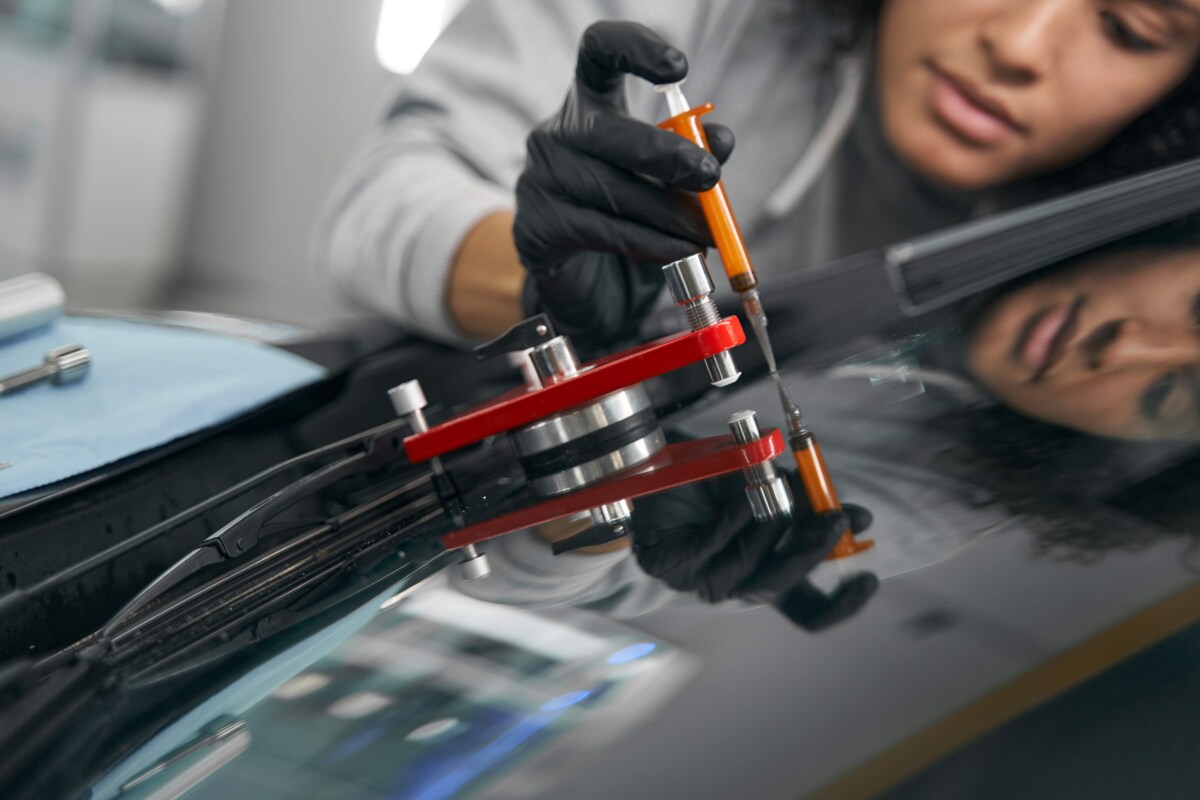
Resin is the most commonly used windshield repair method among professional glass repair technicians. The technician first injects a small amount of resin into the damaged area to fill in any gaps in order to repair chips and cracks. Heat is then carefully applied to the resin, causing it to slightly expand and form a complete seal. The heat also causes the resin to harden, which strengthens the damaged area and prevents it from spreading.
When deciding on proceeding with this method of repair, there are a few important factors to consider:
- Resins must be properly cured: For resins to cure and harden, a specific UV wavelength specification and exposure duration are required.
- Resins must have a certain tensile strength: The right resin tensile strength is required to restore the long-term integrity of a windshield.
- Resin must be compatible with the type of damage and color of the windshield: Choosing resins based on viscosity and tint can mean the difference between success and failure.
Windshield Replacement

The final method of windshield glass repair is replacement. It is not possible to repair every chip or crack you encounter. If a chip is larger than a quarter, it may not be able to be filled. If a crack is larger than the size of a dollar bill, then it should not even be attempted to be repaired. Lastly, if a chip or crack has been repaired before and continues to grow, then it should not be repaired again. In cases like these, windshield replacement is the most sensible level of repair.
All About The Windshield Repair Process
We discussed the various types of windshield damage and how they may appear in your windshield in a previous blog: “Windshield Woes: Do I Repair Or Replace My Damaged Windshield?”. Successful identification of the damage can lead to a more effective repair process and can save you a lot of time and money.
All things considered, we’ve put together an in-depth look at how the windshield repair process should work, from the initial assessment to the final results. Windshield repair is usually a simple procedure, but for your safety, it should be handled by a professional.
Anchor Auto Body’s highly trained technicians understand the meticulous nature of the repair process and adhere to the proper procedures to ensure that repairs are completed flawlessly. The repair process can be divided into two major stages, namely:
Windshield Repair Assessment

The technicians must assess the damage before beginning the physical windshield repair process. This assessment will ultimately determine the method of servicing they would employ to repair your windshield and further reduce the chance of it occurring again.
Essentially, they must determine whether or not a repair is feasible. Otherwise, your windshield will need to be replaced. The size of the damage, the depth of the damage, and the location of the damage all factor into the windshield repair estimate.
It is also important to consider the extent of the damage: if it has reached the middle layer of the glass, windshield repair may not be the best option.
In terms of damage location, windshield repair is only possible if the end result does not interfere with the driver’s perception of the road or any technology sensors on the windshield. If the damage to your windshield isn’t too large, too deep, or in a particularly vulnerable location, you can have it repaired rather than replaced.
Windshield Repair Process
1. Repair Preparation
The technician will prepare the area around the damage for the actual repair as the first step in the windshield repair process. This includes covering the hood and cleaning the windows.
2. Initial Cleaning
Following that, an initial cleaning takes place. To ensure a successful repair, the windshield cleaning process entails vacuuming the air from the broken windshield.
3. Repair Application
The third step in the windshield repair process is to apply glass healer resin to the damaged area. The goal is for it to penetrate every single part of the crack. This precision is what leads to a fantastic end result.
4. Curing
After injecting enough glass healer resin into the damaged area, the technician will cure it with ultraviolet light. The resin or patch will solidify at this point, and the damage will be repaired.
5. Final Touches
Finally, the technician cleans up the excess resin or patch and polishes the repaired spot to smooth it out. A final pass through will be performed, which will include cleaning the glass and removing any in-process paraphernalia, completing the windshield repair service.
Win With Proper And Timely Windshield Repair And Care
Any type of damage to a windshield is serious and should be addressed as soon as possible. Windshields may appear to be an insignificant safety feature, but they are vital. A damaged windshield loses its ability to withstand the impact of a flying object and can become a serious visual obstruction and become extremely dangerous to you and your passengers.
Get the best glass repair service that you deserve. Anchor Auto Body offers top-notch windshield repair services without the high costs or long wait times that other companies charge. Our technicians believe that you and your vehicle deserve nothing less than the best, and we go the extra mile to meet those standards. One of our happy customers, Julie M., shares her experience below:
Tom and his crew at Anchor Auto Body made the process of having my car repaired very easy for me, once they had the car the worked with my insurance and handled everything. They kept me updated on the status if repair and when my car would be ready. After getting car back we noticed something was off when we did the oil change and Tom had me take the car back in and he checked it and even put it on the lift and had us go back with him to see what we were talk8ng about, come to find out the car had been in an accident previously that I was unaware of since I only had car for 3 months. Tom was very helpful and I appreciate him taking the time to show us what was wrong and it had nothing to do with why my car was there to start with. Thank you Anchor Auto Body for such good work and going the extra mile.
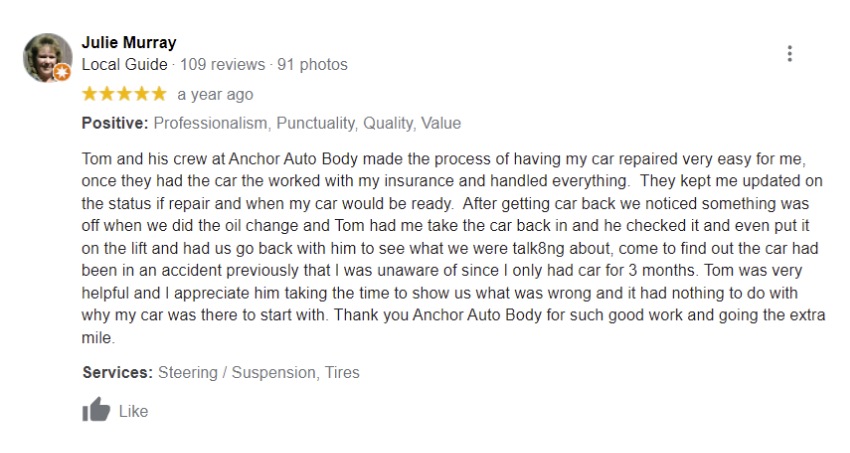
Want to learn about paint delamination? Read our blog post on that topic.

